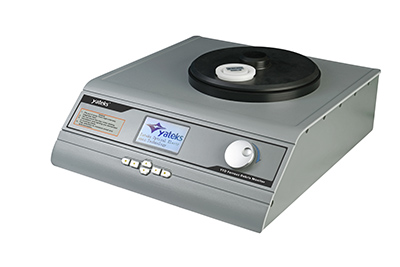Monitoring the use of oil is of great significance to reduce the maintenance time and cost of equipment. YTD-2 Ferrous debris monitor can quickly detect the content of trace iron in lubricating oil, hydraulic oil, and grease, and accurately and quickly evaluate the use of lubricating oil in use situation. The repeatability test result of the YTD-2 iron meter has a test error of less than 2.0% (precise, one of the difficult problems), a test can be completed in 40 seconds (fast, the second one of the problems), and the appearance is beautiful and compact, and it is easy to use ( Portable, solve the problem 3), reach the advanced level at home and abroad.
What are the benefits of YTD-2 Ferrous debris monitor for us:
- Save a lot of costs and bring continuous benefits
- Prevent additional mechanical loss
- Prevent expensive downtime for maintenance
- Able to predict possible problems
- Use PQ index for trend analysis
PQ technical explanation:
What is PQ?
PQ is a sensitive magnetometer, which measures the total amount of iron filings in the sample and displays it with the PQ index. The PQ index is a quantitative number without a unit, and it has a good linear relationship with the content of iron filings and the size of the particles in the sample.
Particle size
PQ is a basic tool in the process of oil analysis. It can identify large iron filings (greater than 5 to 10 microns) that cannot be measured by other analytical techniques without complicated sample preparation.
What does PQ measure?
When a sample containing ferromagnetic wear debris is placed in a magnetic field, PQ measures the change in the resulting magnetic field. The displayed result is the PQ index, which can correspond to the density obtained by ferromagnetic measurement and the ppm value of the spectral analysis result
Quick measurement
After placing the sample, it only takes about 5 seconds to get the PQ index, without complicated and time-consuming sample preparation.
Uniqueness of PQ
The spectroscopic scattering and absorption technology cannot be used for the daily analysis of particles larger than 5 to 10 microns without complicated and time-consuming settings. It is also difficult to do so using acid corrosion and rotating electrode filtration or direct reading of ferrographs.
Testing of non-ferrous machinery:
PQ only reacts to iron and nickel, so it may not be suitable for testing aluminum machinery and white metal bearings. But for oil analysis, such as diesel engines (consisting of multiple elements), PQ is very useful in identifying the appearance of large particles and judging whether the filter membrane has penetrated.
The YTD-2 Ferrous debris monitor measuring instrument produced by Yateks consists of three parts: the host, the measuring hole and the turntable. When the oil cup placed in the measuring hole is turned to the measuring position, the high-precision sensor can directly read the iron content according to the influence of the ferromagnetic substance in the oil sample on the magnetic field. reading.
Shenzhen Yateks Co., Ltd. was established in 2003. It is a national high-tech enterprise specializing in R&D, production and sales of oil, vibration, temperature, optics and other instruments and equipment. It specializes in equipment fault diagnosis and condition monitoring. R&D and production of technical products, the main products are vibration monitoring, oil monitoring, infrared temperature measurement, and industrial endoscopes.
After 10 years of development, the company has become a leading enterprise in China’s instrument monitoring industry. The company has a group of high-quality talents. With the continuous growth of the company’s R&D team, the R&D strength is also increasing. The iron spectrometer, lubricating oil pollution tester, fast oil quality analyzer, oil quality sensor and diesel engine internal leakage detector independently developed by the company have obtained national patents.


